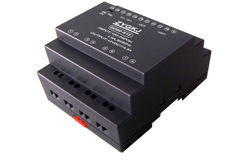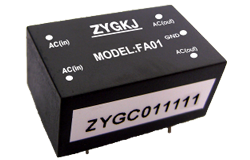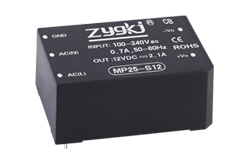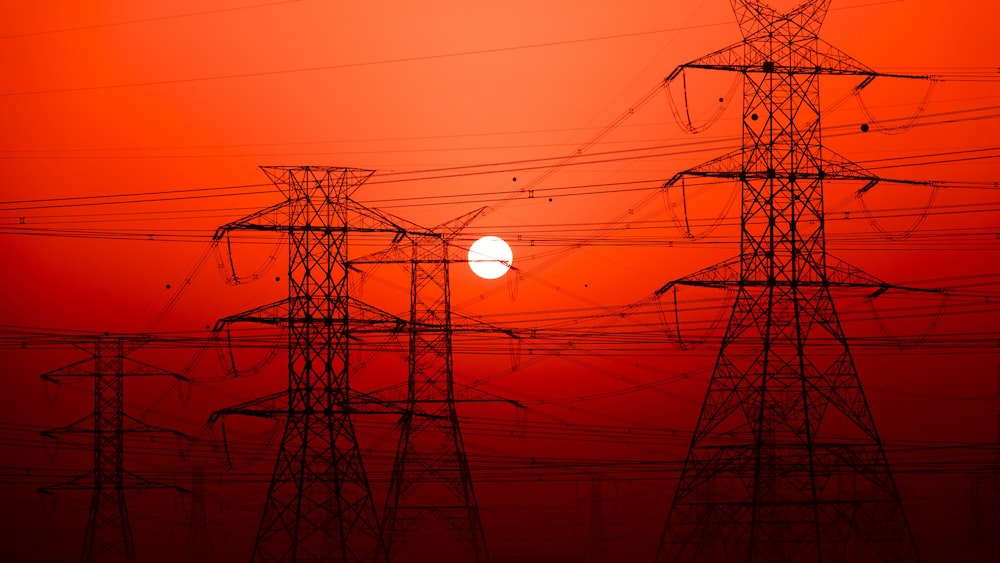nuus
DC Power Conversion: Understanding the Basics and Applications
Author: ZYG Power Module Time: 2023-5-26
Direct current (DC) power conversion is an essential process in our modern world. It involves the transformation of electrical energy from one form to another. DC power conversion is widely used in various areas, from household appliances to industrial automation, and from renewable energy generation to electric vehicles. In this article, we will discuss the basics of DC power conversion and its applications.
DC Power Conversion Basics
DC power conversion involves three main components: input source, conversion circuit, and output load. The input source can be an AC power source, a battery, or a renewable energy source like solar or wind. The conversion circuit is responsible for converting the input power to the desired output power. It consists of voltage regulators, power converters, inverters, and transformers. The output load is the device or system that consumes the converted power.
DC power conversion can be classified into two types: AC to DC conversion and DC to DC conversion. AC to DC conversion involves the conversion of AC power to DC power. It is used in devices that require a steady DC voltage, such as computers, mobile phones, and LED lights. DC to DC conversion involves the conversion of DC power from one voltage level to another. It is used in devices that require different voltage levels, such as electric vehicles, solar energy systems, and industrial automation.
AC to DC Conversion
In AC to DC conversion, the AC power is converted to DC power using a rectifier circuit. The rectifier circuit consists of diodes that allow the current to flow in only one direction. The rectifier circuit can be either a half-wave rectifier or a full-wave rectifier.
A half-wave rectifier allows only half of the AC input cycle to pass through, resulting in a pulsating DC output. A full-wave rectifier allows both halves of the AC input cycle to pass through, resulting in a smoother DC output. The rectified output voltage can be further smoothed by using a capacitor filter.
DC to DC Conversion
In DC to DC conversion, the input voltage is transformed to the desired output voltage using a converter circuit. The converter circuit can be either a buck converter or a boost converter.
A buck converter reduces the input voltage to a lower output voltage by using a switch and an inductor. The switch is turned on and off at a high frequency, creating a ripple current in the inductor. The inductor stores the energy during the on-time and releases it during the off-time, resulting in a lower output voltage.
A boost converter increases the input voltage to a higher output voltage by using a switch, an inductor, and a diode. The switch is turned on and off at a high frequency, creating a ripple current in the inductor. The diode prevents the inductor from discharging back to the input during the off-time, resulting in a higher output voltage.

DC Power Conversion Applications
DC power conversion is used in various applications, including:
1. Renewable Energy Systems: DC power conversion is used to transform the DC power generated from renewable energy sources like solar and wind to AC power for grid connection.
2. Electric Vehicles: DC power conversion is used to convert the DC power from the battery to the desired voltage level for the motor.
3. Industrial Automation: DC power conversion is used to convert the DC power to various voltage levels for the control systems in factories.
4. Household Appliances: DC power conversion is used to power various household appliances like computers, mobile phones, and LED lights.
Afsluiting
DC power conversion is an essential process in our modern world. It involves the transformation of electrical energy from one form to another using various conversion circuits. DC power conversion is used in various applications, from renewable energy systems to electric vehicles and household appliances. Understanding the basics of DC power conversion is crucial for designing efficient and reliable systems in these applications.
vorige: Efficient and Reliable ACDC Power Supply SF Series (3~100W)
volgende: Efficient Power Conversion with ACDC Converter SPM Series (30-300W)
relevante inligting
-
2023-6-26
SP Series AC DC Converter – Power Up Your Electronics with Efficiency
The SP series AC DC converter is a power supply unit designed to power up electronic devices with high efficiency. It is a versatile device that can be used in a variety of applications, including industrial, medical, and telecommunications. The SP series converter has a wide input voltage range, making it suitable for use in both AC and DC applications. It has a high power density, which means that it can deliver high power outputs while maintaining a compact form factor. One of the key features of the SP series converter is its high efficiency. This is achieved through the use of advanced power conversion technologies, such as resonant topologies and active power factor correction. These technologies reduce power losses...
Sien besonderhede -
2023-7-8
AC-DC Power Supply: A Vital Component for Efficient Electrical Systems
In our modern world, where technology is advancing at an unprecedented pace, efficient electrical systems are crucial for powering various devices and equipment. One vital component that enables the smooth operation of these systems is the AC-DC power supply. This article will delve into the importance of the AC-DC power supply and how it ensures the reliable and efficient functioning of electrical systems. To understand the significance of the AC-DC power supply, we must first comprehend the difference between alternating current (AC) and direct current (DC). AC is the type of electricity commonly supplied by utility companies and is characterized by the periodic change in the direction of current flow. On the other hand, DC is a steady flow of...
Sien besonderhede -
2023-4-13
AC-DC Converter: Converting Alternating Current to Direct Current
An AC-DC converter is a device used to convert alternating current (AC) to direct current (DC). This is important because many electronic devices require DC to operate properly. The process of converting AC to DC involves a few basic steps. The first step is to rectify the AC voltage. This means that the negative portion of the AC waveform is inverted so that it becomes positive. This is done by using a rectifier, which is a device that allows current to flow in only one direction. There are two types of rectifiers: half-wave rectifiers and full-wave rectifiers. Half-wave rectifiers only allow current to flow during the positive half of the AC waveform, while full-wave rectifiers allow current to flow during...
Sien besonderhede -
2023-8-28
AC/DC Power Supply Module: Efficient and Reliable Solution for Various Applications
Introduction The demand for reliable and efficient power supply solutions has never been higher. Whether it is for industrial automation, telecommunications, or consumer electronics, a stable and efficient AC/DC power supply module is crucial to ensure the uninterrupted operation of these applications. This article aims to explore the benefits and applications of AC/DC power supply modules and highlight their importance in various industries. 1. What is an AC/DC Power Supply Module? An AC/DC power supply module, also known as a power converter, is an electronic device that converts alternating current (AC) into direct current (DC). It acts as a bridge between the power grid and electronic devices, providing a stable and regulated power source. These modules are typically compact and...
Sien besonderhede -
2023-5-18
Waterproof 12V AC to DC Converter for Reliable Electrical Devices
Reliability is essential when it comes to electrical devices. It is vital to install devices that work consistently regardless of the conditions. One solution that experts recommend is the installation of a waterproof 12V AC to DC converter. This highly reliable tool assures optimal performance no matter the prevailing environmental conditions. Notably, electrical devices typically rely on AC (alternating current) power input. Commutator-based motor machines such as refrigerators, air-conditioning fans, and pumps require AC electrical input to operate. Contrariwise, electronic devices such as flat-screen TVs, radios, cameras need DC (direct current) electrical input instead of or together with the AC input for optimal quality and operations. While conventional electrical solutions require the manual hassle of reloading with effective layout adjustments...
Sien besonderhede -
2023-12-29
AC Power Supply Module: Ensuring Reliable and Efficient Electrical Power Delivery
In today's world, where technology plays a vital role in our daily lives, the need for a reliable and efficient power supply is paramount. Whether it is for our smartphones, laptops, or even industrial machinery, uninterrupted and stable electrical power is essential. To meet this demand, AC power supply modules have emerged as a key component in electrical systems. This article explores the importance, functionality, and benefits of AC power supply modules in ensuring reliable and efficient electrical power delivery. Importance of AC Power Supply Modules: AC power supply modules are crucial in converting the alternating current (AC) from the mains supply into stable and regulated direct current (DC) power. This conversion is necessary as most electronic devices require DC...
Sien besonderhede


















